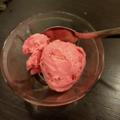Question 2 :
n identical droplets are charged to V volt each. If they coalesce to form a single drop, then its potential will be
Question 4 :
A cylinder is filled with non-viscous liquid of density d to a height $h_0$ and a hole is made at a height $h_1$ from the bottom of the cylinder. The velocity of the liquid issuing out of the hole is:
Question 6 :
Assertion: Pascal's law is the working principle of a hydraulic lift
Reason: Pressure is thrust per unit area
Question 7 :
Assertion: Sudden fall of pressure at a place indicates storm<br/>Reason: Air flows from higher pressure to lower pressure.
Question 9 :
A solid rubber ball of density 'd' and radius 'R' falls vertically through air. Assume that the air resistance acting on the ball is F $=$ KRV where K is constant and V is its velocity. Because of this air resistance the ball attains a constant velocity called terminal velocity $V_{T}$ after some time.Then $V_{T}$ is:
Question 10 :
When a drop of water is dropped on oil surface, then :
Question 11 :
Work done in blowing a soap bubble of radius 10 cm is (surface tension of soap solution is $\dfrac{3}{100}N/m$):
Question 12 :
Assertion: The velocity of flow of a liquid is smaller when pressure is larger and vice versa.
Reason: According to Bernoulli's theorem, for the stream line flow of an ideal liquid, the total energy per unit mass remains constant.
Question 13 :
A fixed cylindrical vessel is filled with water up to height $H$. A hole is bored in the wall at a depth $h$ from the free surface of water. For maximum horizontal range $h$ is equal to :<br/>
Question 14 :
The rain drops falling from the sky neither injure us nor make holes on the ground because they move with:
Question 15 :
The rate of flow of liquid in a tube  of radius $r$, length $l$,whose ends are maintained at a pressure difference $p$ is $V= \dfrac { \pi Qp{ r }^{ 4 } }{ \eta l } $, where $\eta$ is coefficient of the viscosity and $Q$.<br/>
Question 16 :
A soap bubble of diameter $a$ is produced using the soap solution of surface tension $T$. Find the energy required to double the radius of the bubble without change of temperature.
Question 17 :
At sea level, the atmospheric pressure is $1.04\times{10}^{5} Pa$. Assuming $g=10 m {s}^{-2}$ and density of air to be uniform and equal to $1.3 kg {m}^{-3}$, find the height of the atmosphere.
Question 18 :
The velocity of a kerosene oil in a horizontal pipe is $5 m/s$. If $g = 10 m/s^2$ then the velocity head of oil will be<br>
Question 19 :
Water flows steadily through a horizontal tube of variable cross-section. If the pressure of water is p at a point where the velocity of flow is v, what is the pressure at another point where the velocity of flow is 2v; $\rho$ being the density of water?<br>
Question 20 :
When a drop of liquid splits up into many number of drops, then which the following is correct.<br>a) Volume increases<br>b) Area increases<br>c) Energy is liberated<br>d) Energy is absorbed
Question 21 :
If the radius of a soap bubble is four times that of another, then the ratio of their pressure will be.
Question 22 :
The area of cross section of a large tank is $0.5 m^2$.It has a opening near the bottom having area of cross section $1 cm^2$.A load of 20 kg is applied on the water at the top.Find the velocity of the water coming out of the opening at the time when the height of the water level is50 cm above the bottom.Taking g=$10 m/ s^2$.<br/>
Question 23 :
In which one of the following cases will the liquid flow in a pipe be most streamlined
Question 24 :
A thin square plate of side $5\ cm$ is suspended vertically from a balance so that lower side just dips into water with side to surface. When the plate is clean $(\theta = 0^{\circ})$, it appears to weigh $0.044\ N$. But when the plate is greasy $(\theta = 180^{\circ})$, it appears to weigh $0.03\ N$. The surface tension of water 
Question 25 :
The surface tension of a liquid is $5 N/m$. If a film of this liquid is held on a ring of area $0.02  {m}^{2} $, its surface energy is about :
Question 26 :
A sphere of mass m and radius $r$ is projected in a gravity free space with speed $v$. If coefficient of viscosity of the medium in which, it moves is $\dfrac{1}{6\pi}$, then the distance travelled by the body before it stops, is:
Question 27 :
A capillary tube with inner cross-section in the form of a square of side a is dipped vertically in a liquid of density $ \rho $ and surface tension $ \sigma $ which wet the surface of capillary tube with angle of contact $ \theta $. The approximate height to which liquid will be raised in the tube is : (Neglect the effect of surface tension at the corners of capillary tube)
Question 28 :
The force acting on a window of area 50 cm x 50 cm of a submarine at a depth of 2000 m in an ocean, the interior of which is maintained at sea level atmospheric pressure is (Density of sea water = 10$^3$ kg m$^{-3}$,g = 10 m s$^{-2}$)
Question 29 :
A uniform solid ball of density $d$ and of radius $r$ is moving vertically downward inside a viscous liquid $(density = \dfrac{d}{6}$ & coefficient of viscosity$ = \eta )$ with an acceleration of $g/2$ at an instant. Speed of the ball at this instant is <br/>
Question 30 :
 $1m^3$ water is brought inside the lake upto $200 m$ depth from the surface of the lake. What will be change in the volume when the bulk modulus of elasticity of water is $22000 atm$?<br/>(density of water is $1 \times 10^3 kg/m^3$ atmosphere pressure = $10^5 N/m^2$ and $g = 10 m/s^2$


























